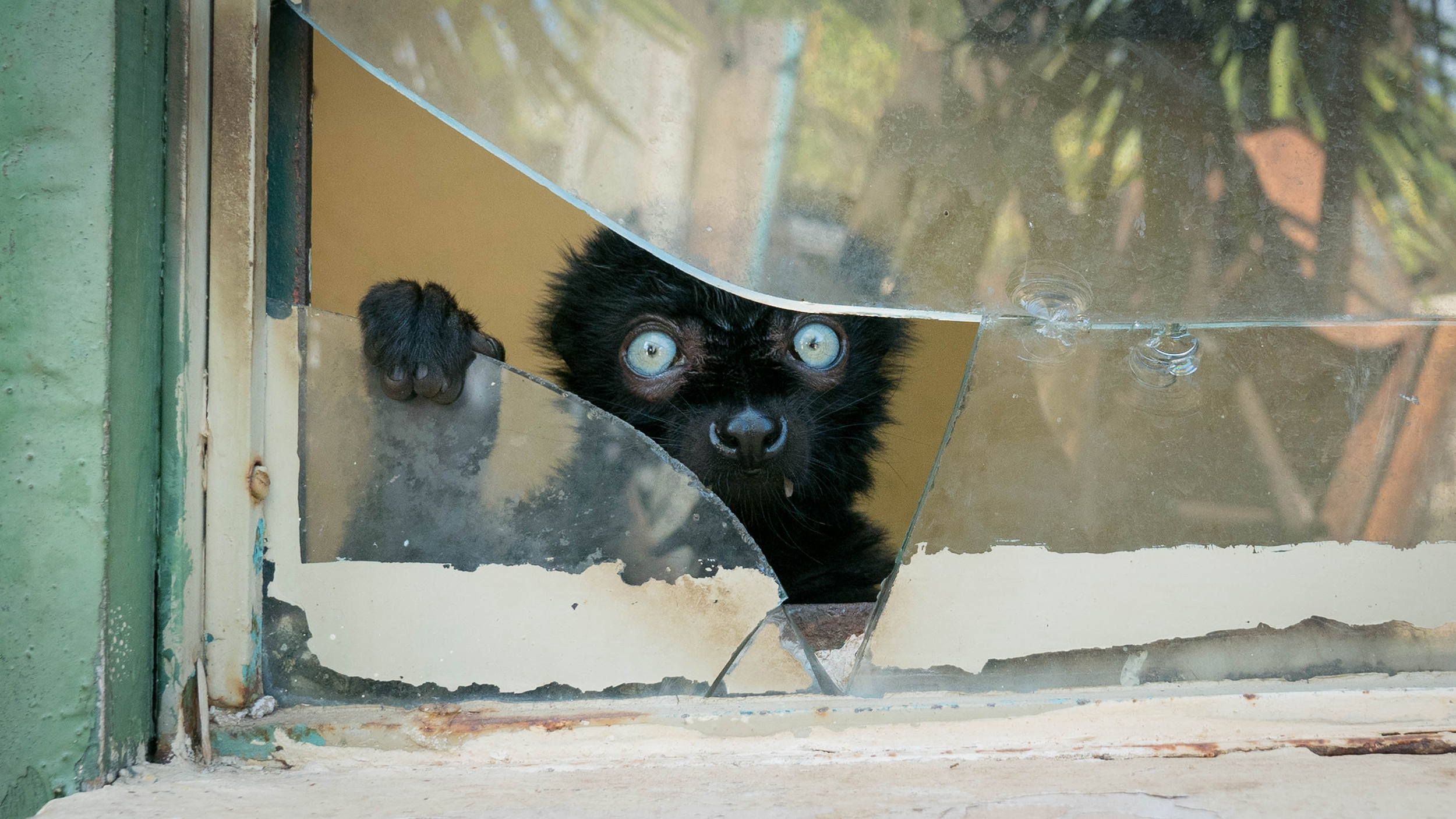It was my first day in Antananarivo, Madagascar with the Mad Dog Initiative. We were visiting the local zoo. While walking, we were suddenly ushered into a back room.
For 5 Ariary (0.0015 USD) we could have honey to feed the lemurs. The next thing I knew, Brown Lemurs were released for our entertainment. I was extremely uncomfortable with the situation from the get-go. And then, I looked to my left. I witnessed an incredible, fragile being trapped in a tiny filthy room. His small hand was carefully grasping the broken glass, while staring right at me. It was a Blue-Eyed Black Lemur – the only primate with blue eyes, besides humans. Endemic to Madagascar, the Blue-Eyed Black Lemur is critically endangered. This image haunts me every day. It expresses the greatest heartbreak of photographing wildlife rescue: you never forget the ones you leave behind.
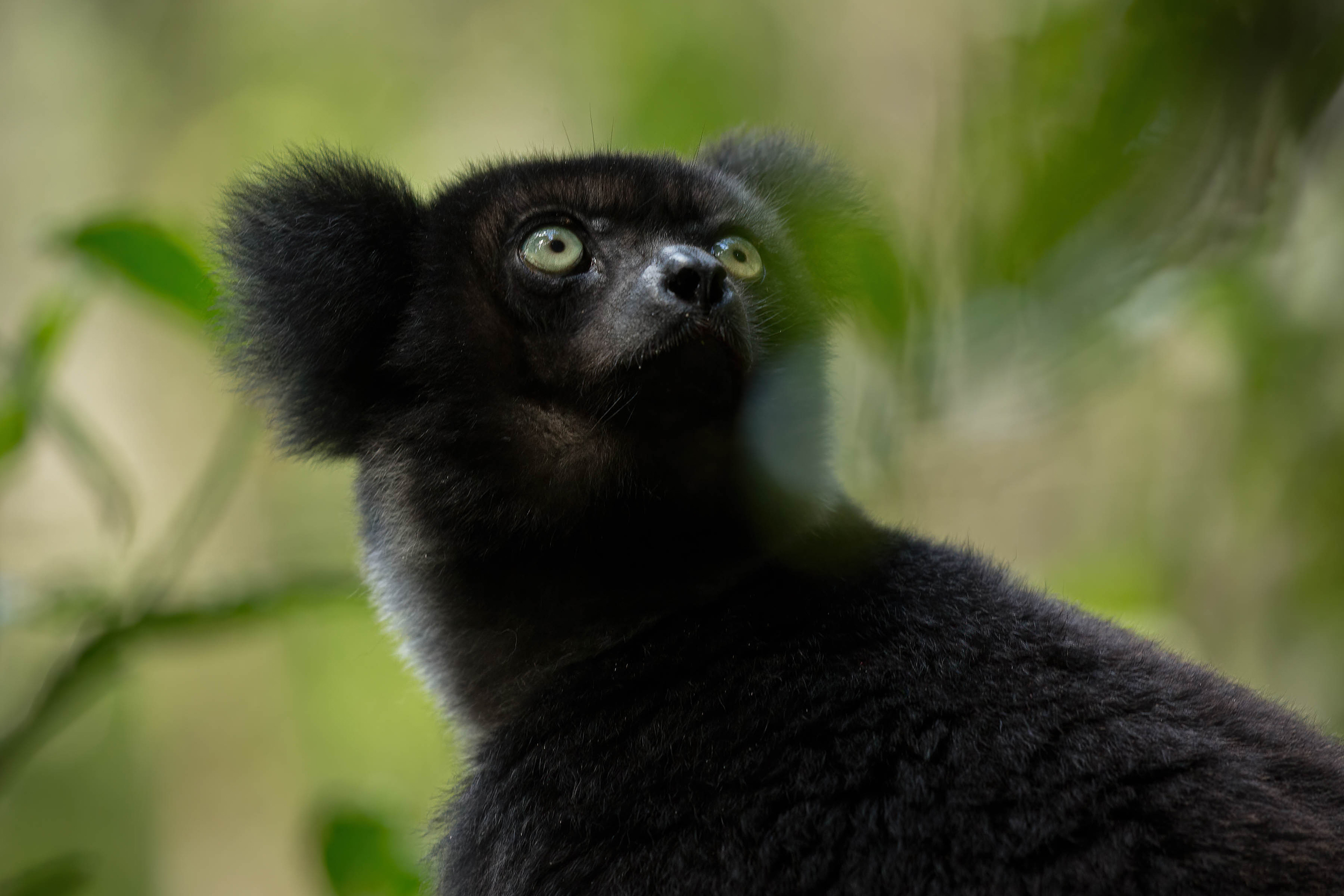
BILD OBEN: Recent findings have determined that 90% of Madagascar’s lemurs are endangered. | © Patricia Seaton
Arriving in Madagascar
For a long time, I had dreamed of hearing one of the largest living lemurs, the Indri “sing.” To stand below them in the rainforest and listen to their haunting call. The Andasibe-Mantadia National Park in Madagascar is the only place on Earth where the Indri live. Hence, I knew that my adventure would take me there.
Due to my work in conservation, I was aware of the dire predicament faced by lemurs in Madagascar. Recent findings have determined that 90% of Madagascar’s lemurs are endangered. In fact, they are currently the most threatened group of mammals on Earth. As a photographer, this only intensified my calling to tell their story.
Research connected me to the Mad Dog Initiative (MDI). Their mission: to promote wildlife conservation, animal welfare and human health in Madagascar. Their method: through the care and humane management of domestic and feral dogs. It was an objective I could wholeheartedly support. A year of planning, 23 hours in the air, 7 hours by taxi brousse (a bush taxi), and I was on my way.
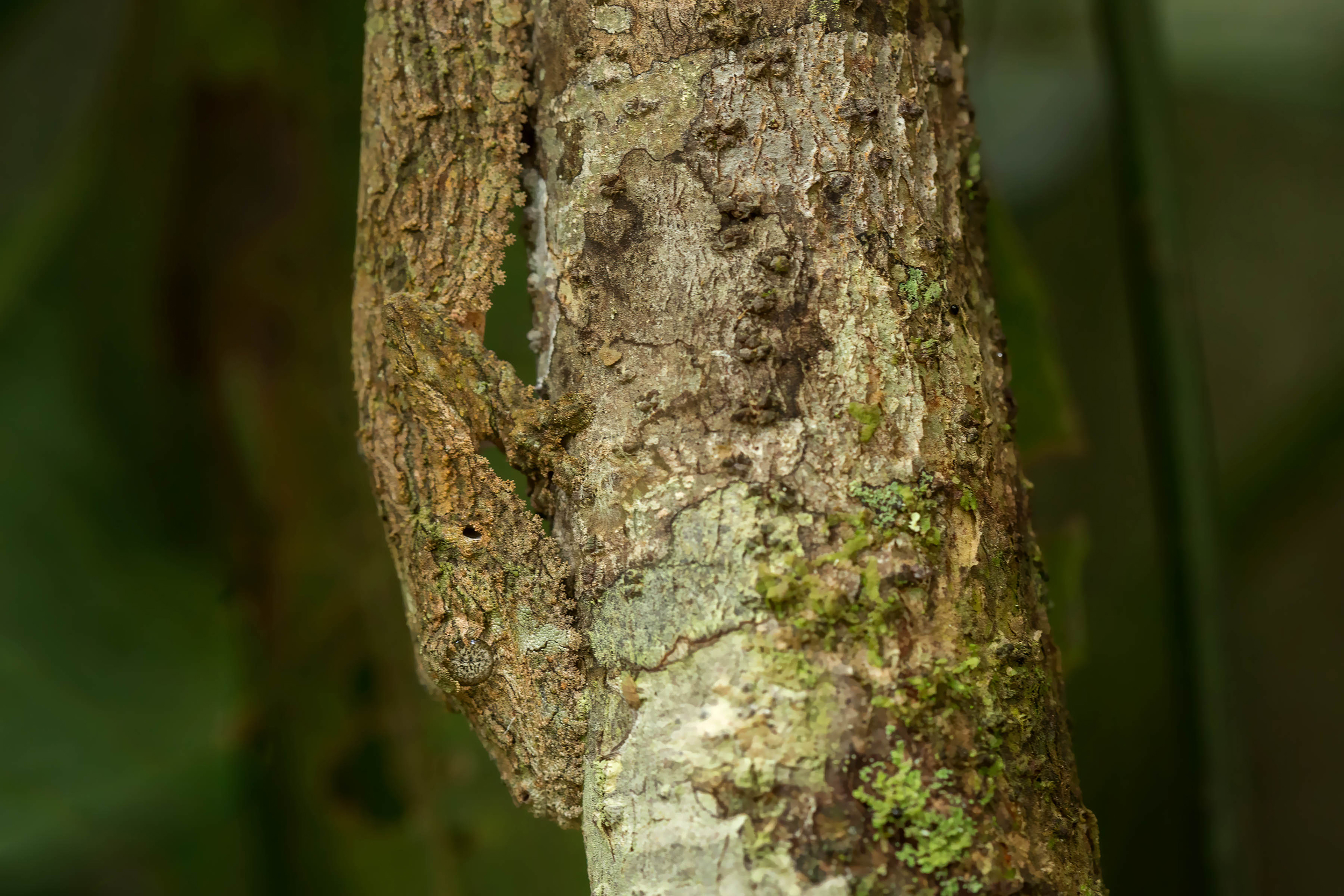
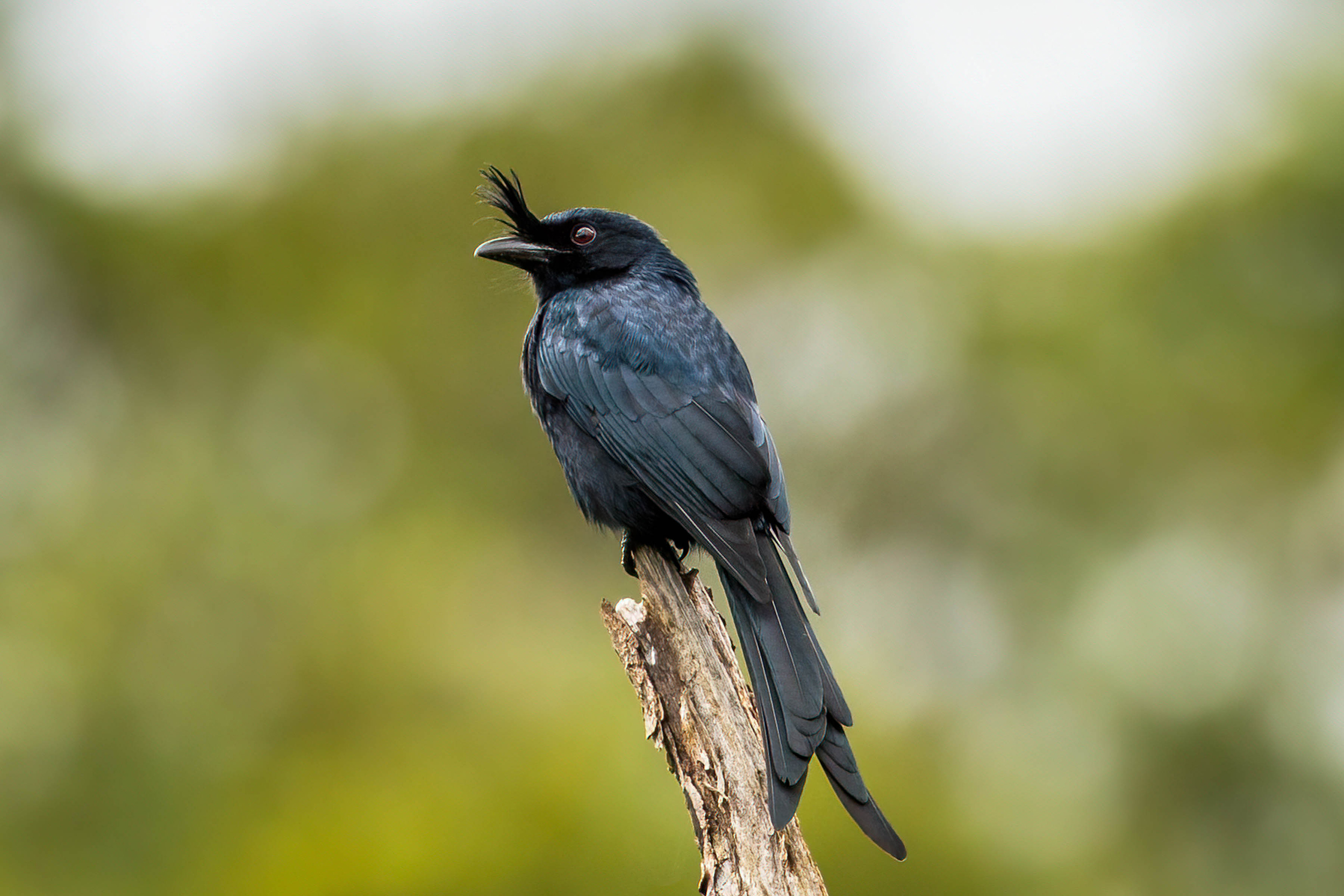
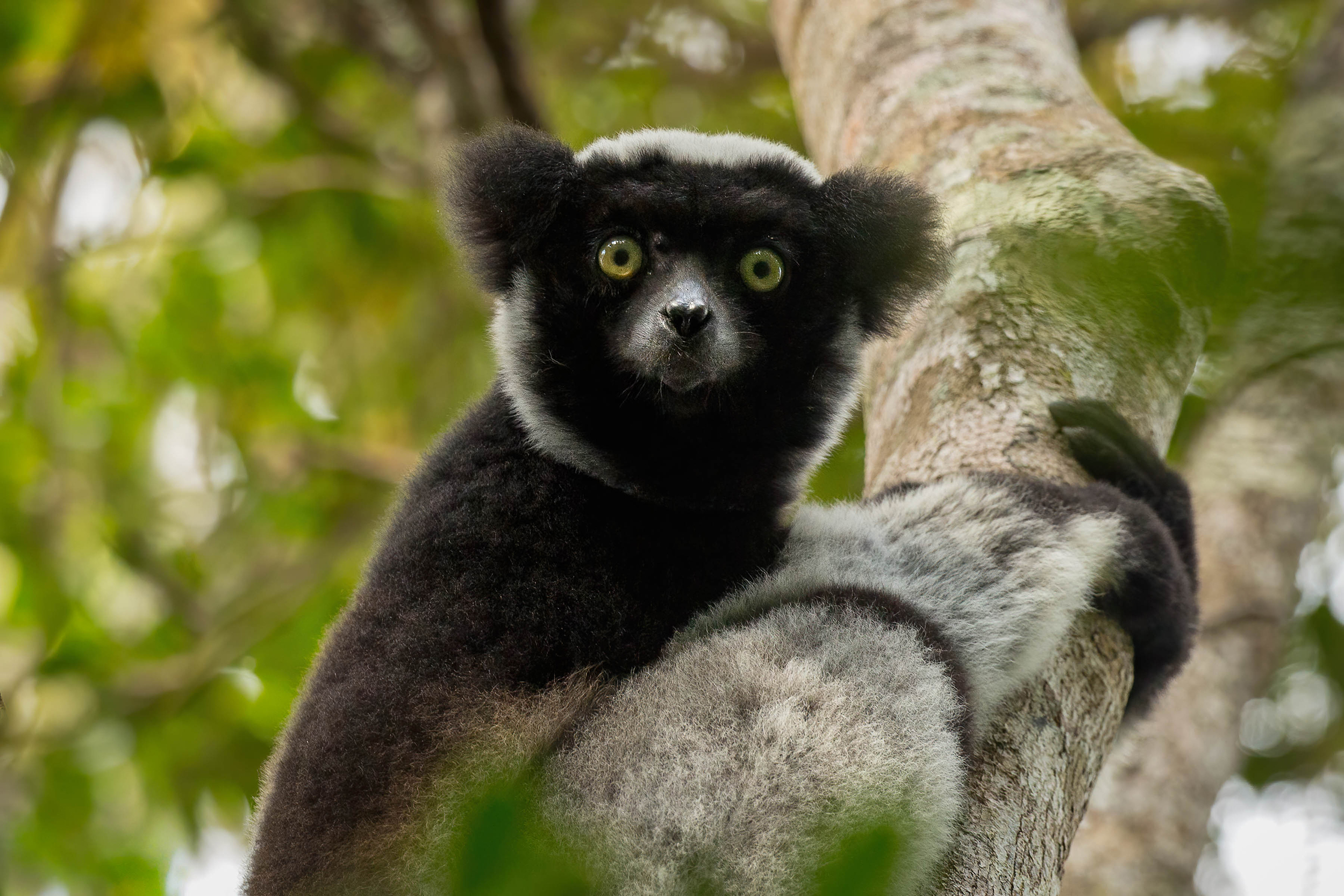
IMAGES IN ORDER OF APPEARANCE: Leaf-tailed gecko (top-left). | Crested drongo (top-right). | Indri lemur unique to Madagascar (bottom). | © Patricia Seaton
A Conservation Issue
The widespread clearing of forests for farmland, charcoal and illegal sapphire mining are jeopardizing Madagascar’s wild inhabitants and its entire ecosystem. The island’s remaining forests are likely to vanish within the next 80 years if deforestation and climate trends continue. Species that have evolved over millions of years could easily be gone by the end of the century.
Approximately 95% of Madagascar’s reptiles, 89% of its plant life and 92% of its mammals exist nowhere else on Earth. There are over 300 different bird species in Madagascar, over half of which are endemic. And 100 species of lemur call Madagascar their only home. Between being targeted by traffickers in the illegal wildlife trade and the massive loss of vital habitat, the situation is critical, to say the least.
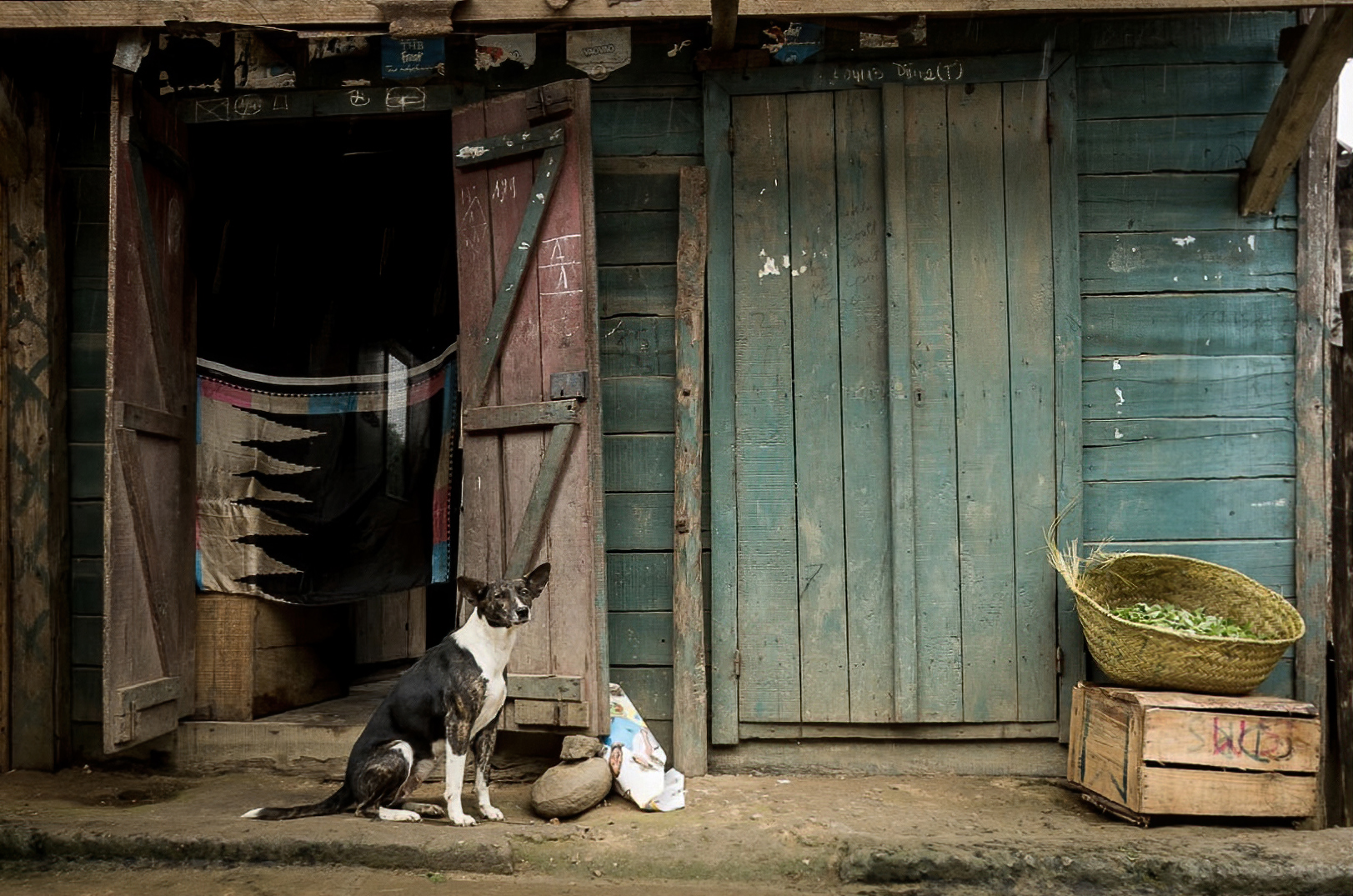
BILD OBEN: Dogs and cats in Andasibe have proven responsible for heart-worm disease in mouse lemurs. | © Patricia Seaton
The Mad Dog Initiative (MDI)
The increasing degradation and fragmentation of forests carries additional consequences. Besides the decrease in lemur diversity, the population is also affected by non-native, invasive predators. Dogs and cats enter the forests to hunt and forage for food. In doing so, they damage the fauna and kill endangered wildlife. New diseases are introduced into the forest, while lemur, carnivore, small mammal, and bird populations are decreased.
For example, camera trap and lemur transect surveys conducted by Dr. Zach Farris revealed that besides negatively affecting lemurs, dogs and cats entering the forest were also affecting native carnivores that hunt lemurs, such as the critically-endangered fosa. Additionally, disease ecologist Dr. Sarah Zohdy and the MDI research team discovered the first account of primates (mouse lemurs), contracting heartworm from free-ranging dogs.
In order to provide solutions to this problem, Dr. Zach Farris and Dr. Kim Valenta created the Mad Dog Initiative (MDI) in 2013. The premise was simple and the solution novel: if you could control dog and cat populations, maybe you could save wildlife, too. The assignment: to capture, spay/neuter and vaccinate domestic and feral dogs in the villages surrounding Andasibe-Mantadia National Park.
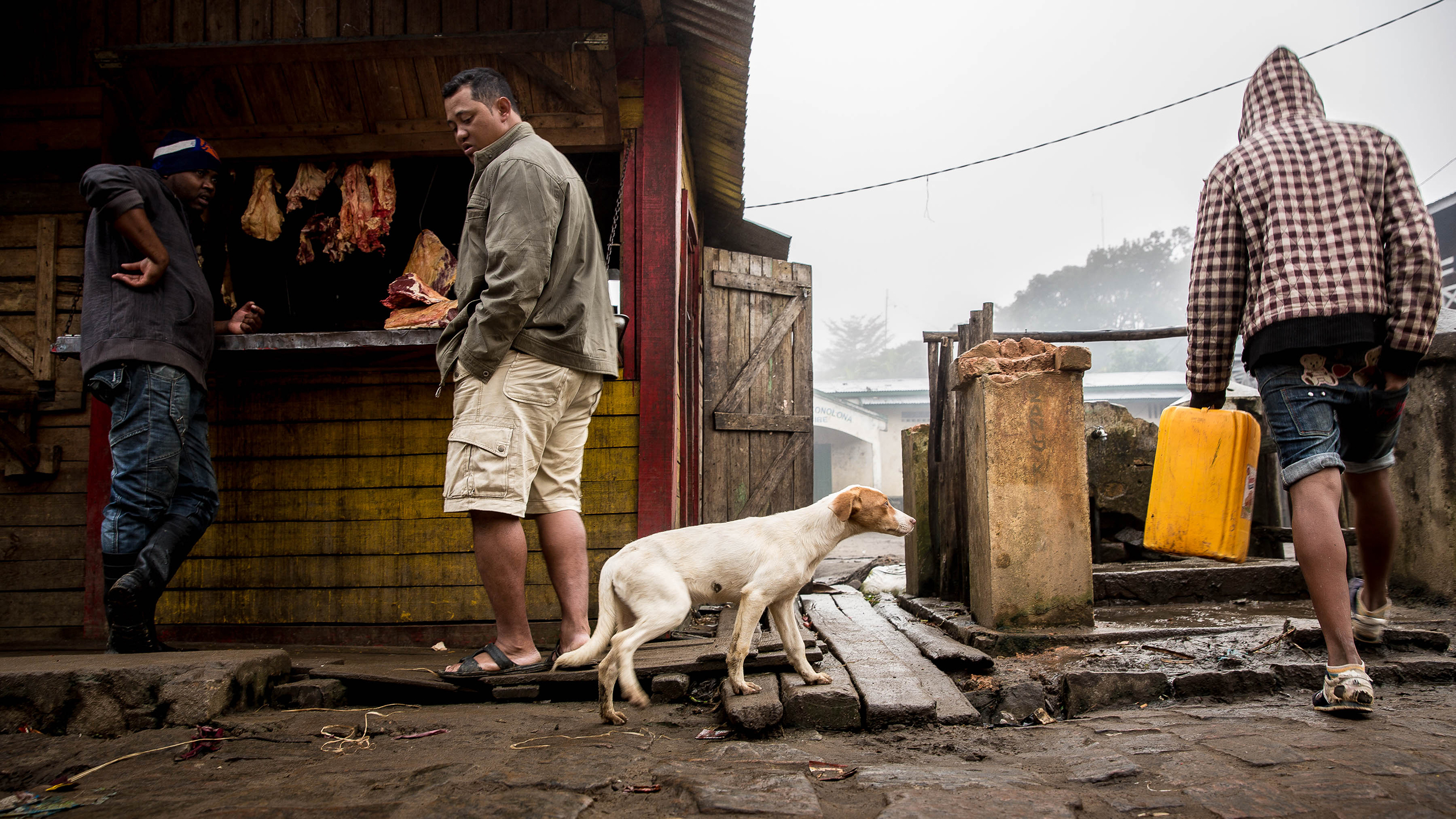
BILD OBEN: Dogs in Andasibe were provided with free vaccinations and neuters/spays to reduce the population encroaching on native species in Andasibe-Mantadia National Park. | © Patricia Seaton
The Dogs of Andasibe
For one month, I followed the MDI teams daily with my camera. We walked through the villages surrounding the Andasibe-Mantadia National Park. By inciting open conversation and education, the veterinarian team explained the project to the local population, while patrolling for dogs. MDI offered free vaccinations, along with a neuter/spay. Dogs and cats were picked up and dropped off at our mobile clinic for surgery. If they couldn’t get to us, we went to them.
On my daily excursions, I was introduced to the difficult lives of dogs in Madagascar. Often, I followed particular dog to learn about them. I saw them as individuals and quickly recognized the village regulars. Privileged to become an observer of their lives, my story would be incomplete without honoring them and their challenging circumstances.

BILD OBEN: In the end, Toto found a happy home with one of the veterinarians at Mad Dog Initiative. | © Patricia Seaton
Meet Toto. Toto lived in the back of a sawmill. Tied to a pole on a short rope, he was malnourished, dehydrated and naked from mange. The owners said they were embarrassed by his appearance, therefore they never took Toto from the yard. With the help of MDI’s veterinary team, Toto was neutered and vaccinated. Eventually, he was surrendered to us and found a new home with one of MDI’s veterinarians.
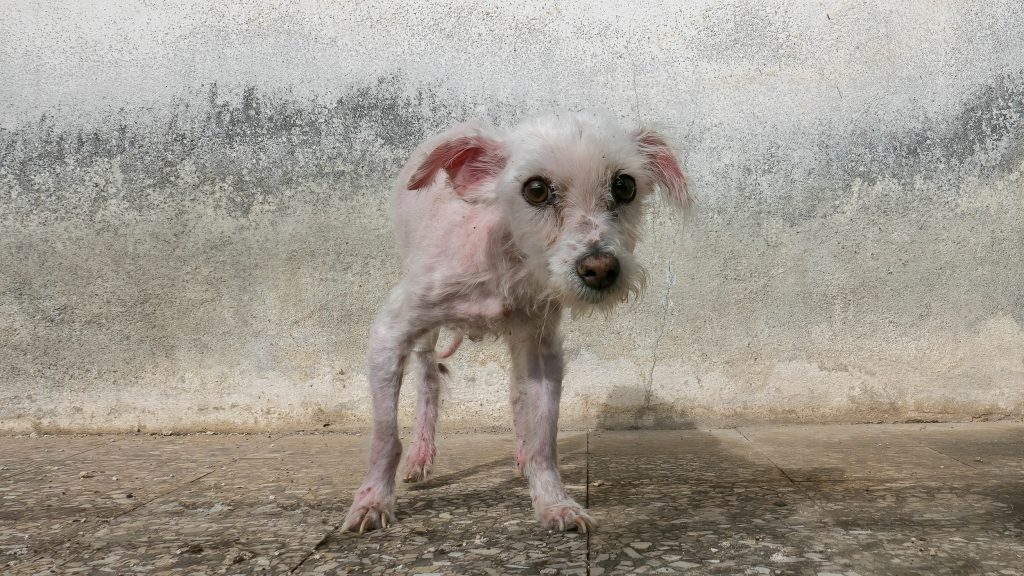
BILD OBEN: The veterinary team at Mad Dog Initiative did everything they could to save Bobby. | © Patricia Seaton
This was Bobby. We heard him barking on a neighbour’s balcony. He was badly neglected, dehydrated, malnourished, and covered with fleas and ticks. We provided Bobby basic care. Our team shaved his matted and infested coat, treated him for fleas and provided him with meals. In the end, the owners did not wish to surrender Bobby for any further treatment. He was later found drowned in the local river.
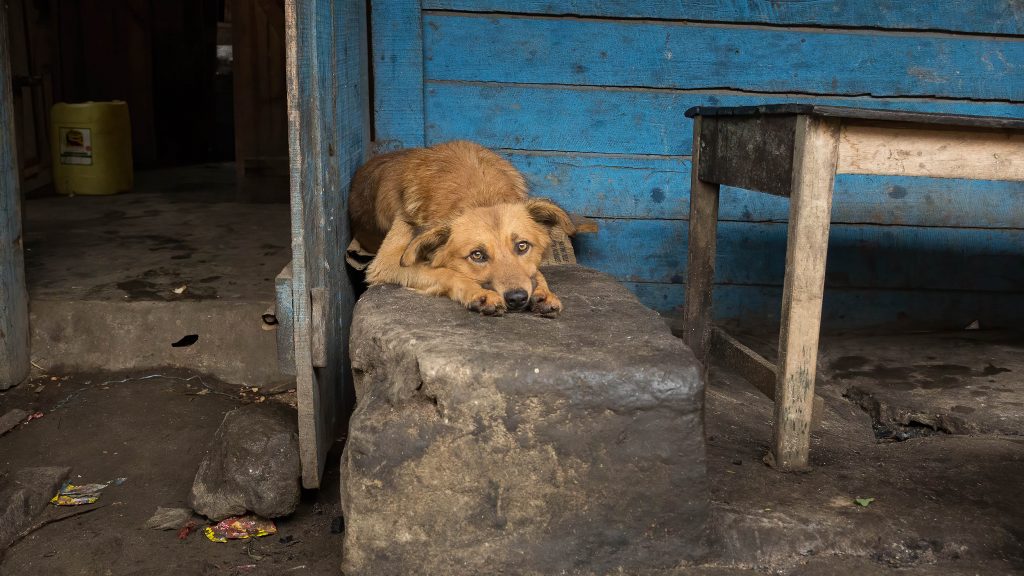
BILD OBEN: As a feral dog, Tango was very cautious at the beginning. But over time, he allowed me to approach him more closely.| © Patricia Seaton
My relationship with Tango began at a distance. He wandered alone and always kept clear of people, as feral dogs often do. I learned pretty quickly that getting down low and pointing my camera is an aggressive act towards a feral dog. Occasionally, I would and over time, he allowed me to pass by a little closer. I never pushed. This day, Tango had found shelter from the rain. He had a gaping wound on his right side and our vet team did their best to help him mend.
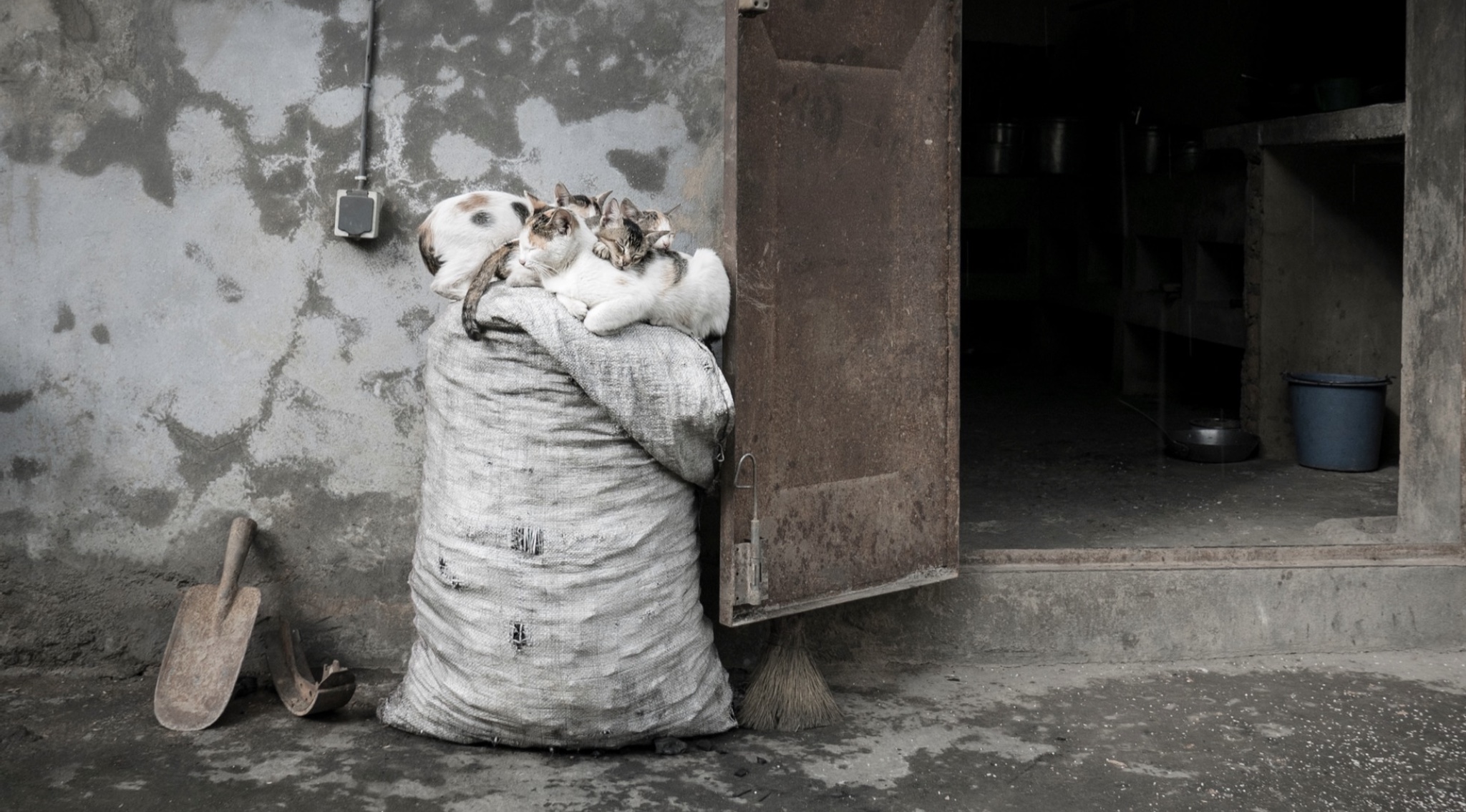
BILD OBEN: Often, it was unclear as to who “owned” a specific dog or cat in Andasibe. | © Patricia Seaton
In Andasibe, it was not always clear as to who “owned” a specific dog or cat. Nor could the team presume that the owner would want his/her animal to be neutered or spayed. These issues had to be resolved before any action could be taken by the MDI team. As breeding an animal may be a source of income in an impoverished community, this made the initiative all the more challenging.
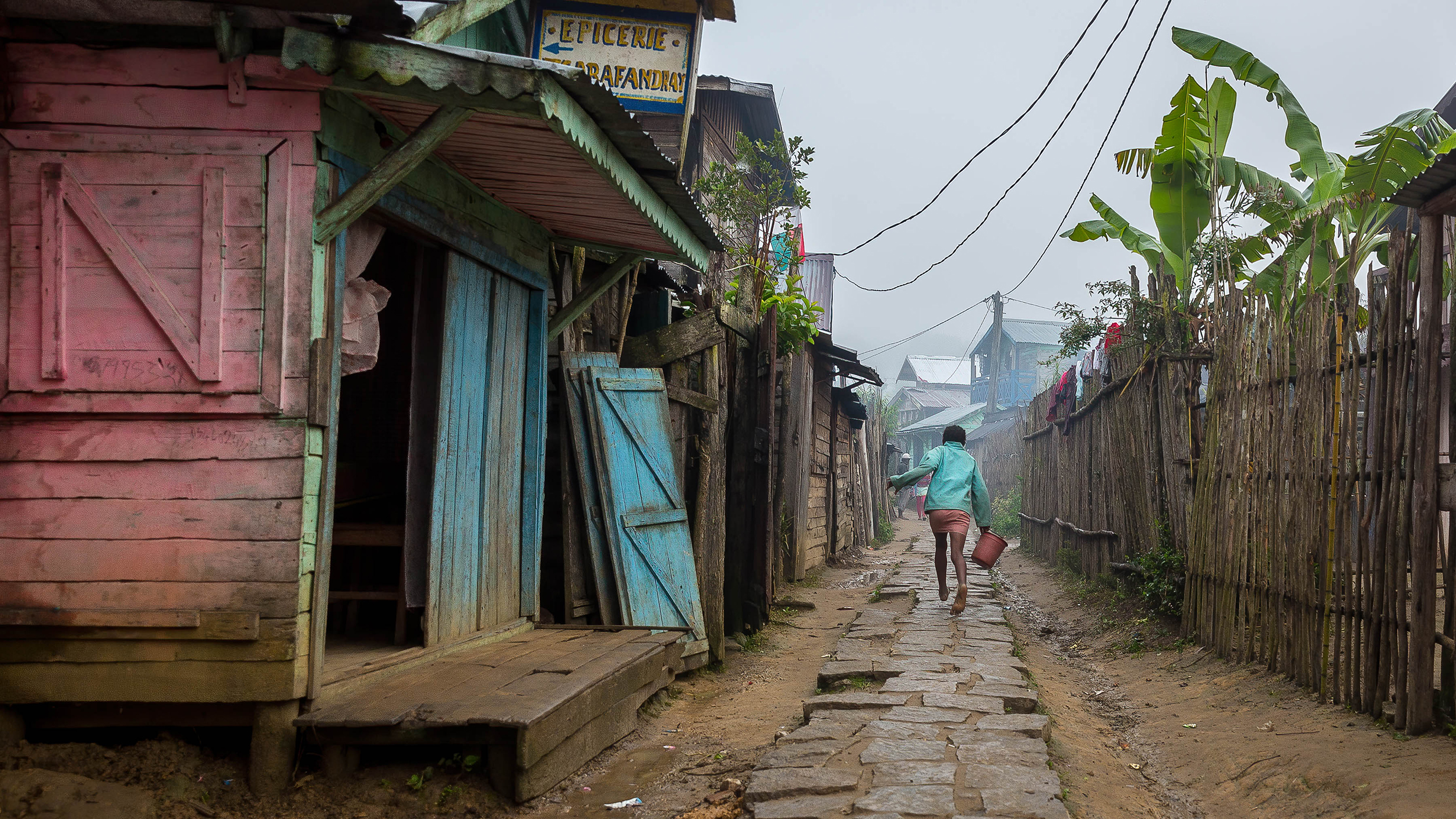
BILD OBEN: The week I arrived in Andasibe, it rained for 7 days and 8 nights straight. | © Patricia Seaton
Life as a Photographer in Andasibe
On a daily basis, I set my alarm for an hour before sunrise. Camera in hand, I was usually the first to rise and the last to go to bed. My routine was to catch the morning light, stay up late to download photos and prep my kit for the next day. When capturing images, I love to walk every road, back alley, path, and trail countless times. Regardless of whether there is rain or sunshine, I am always outdoors. And in Madagascar it rained. It rained non-stop for 7 days and 8 nights the week I arrived. That’s life in a rainforest: wet clothes, wet socks, wet bed, wet boots. My only concern was to keep my camera equipment dry.
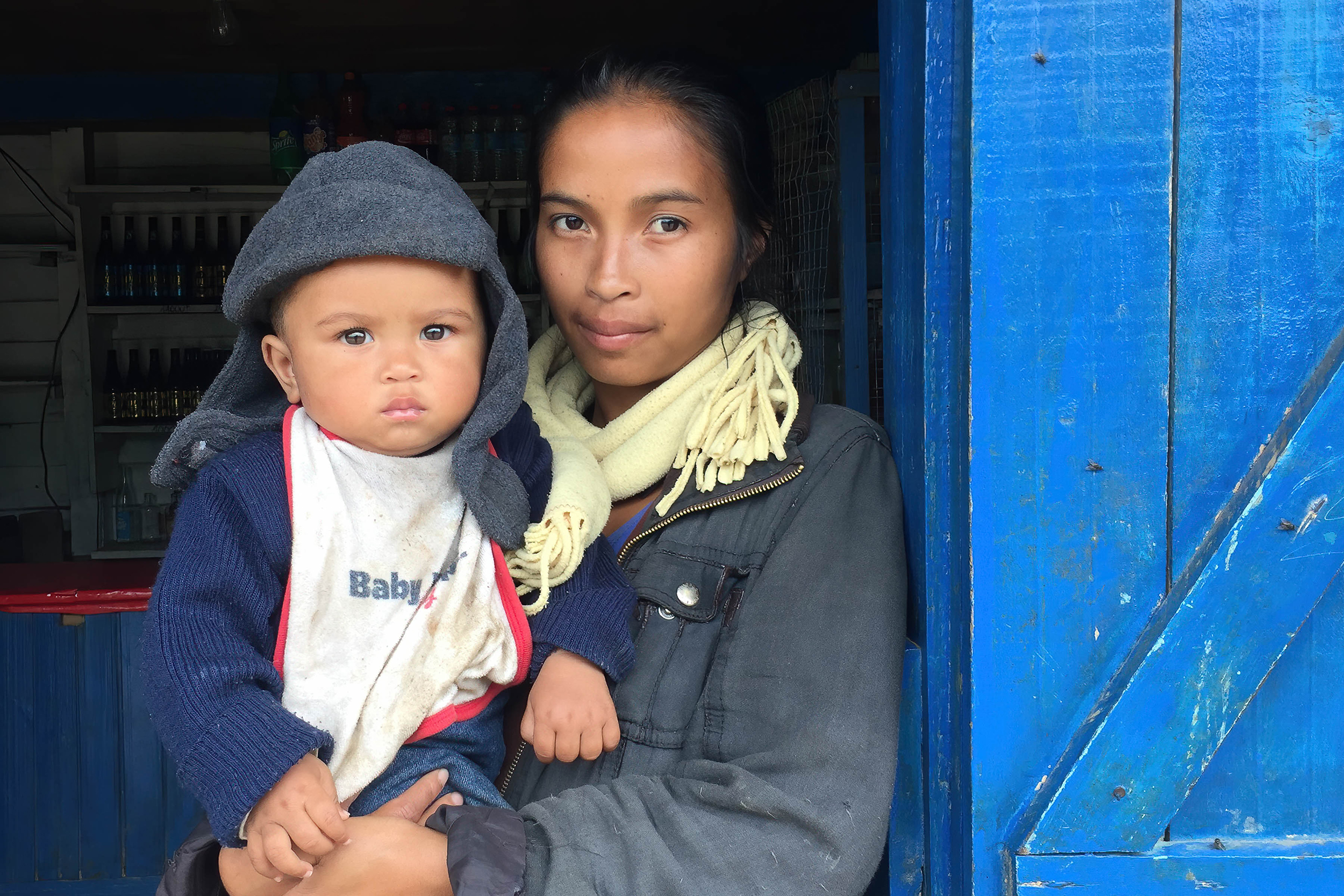
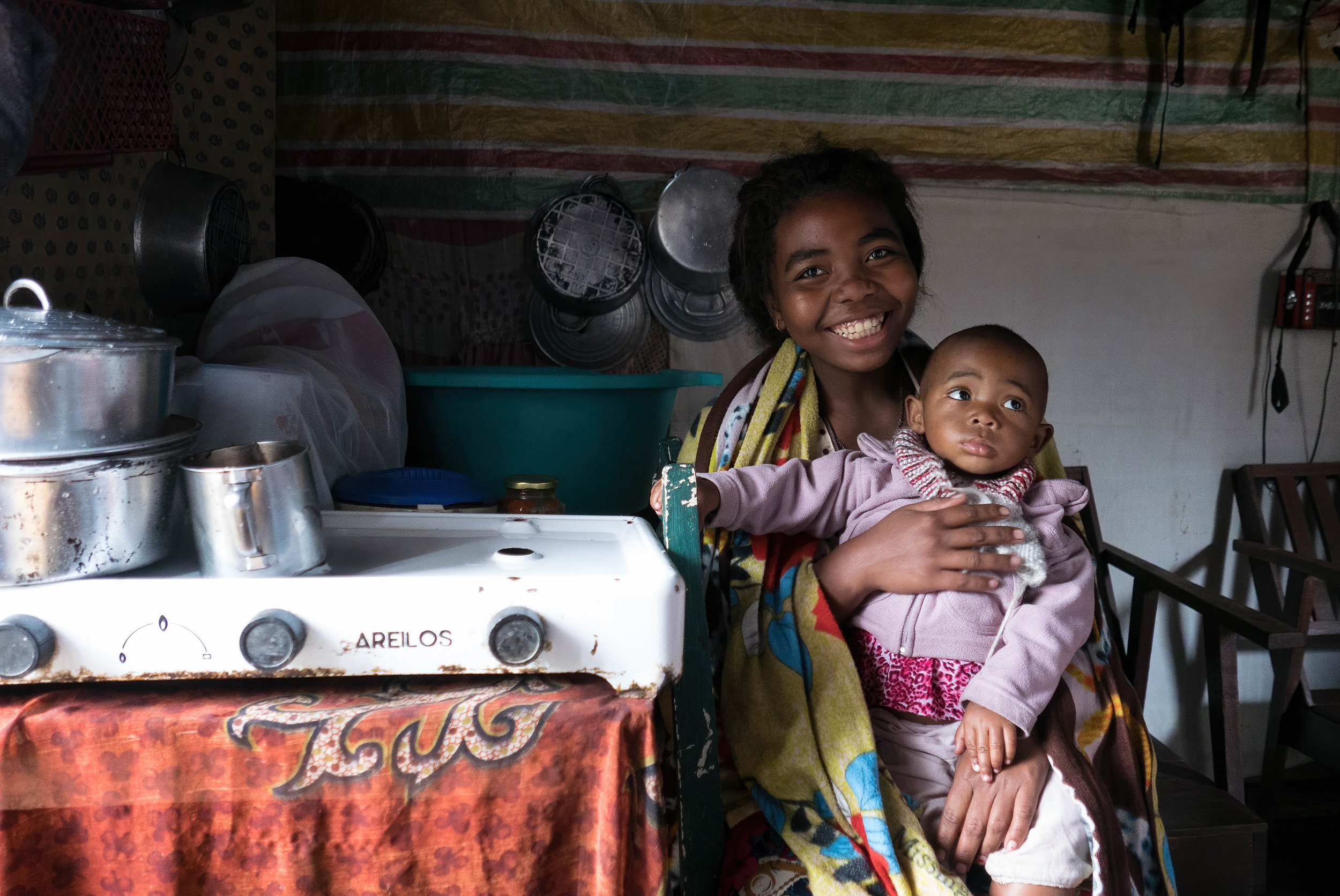
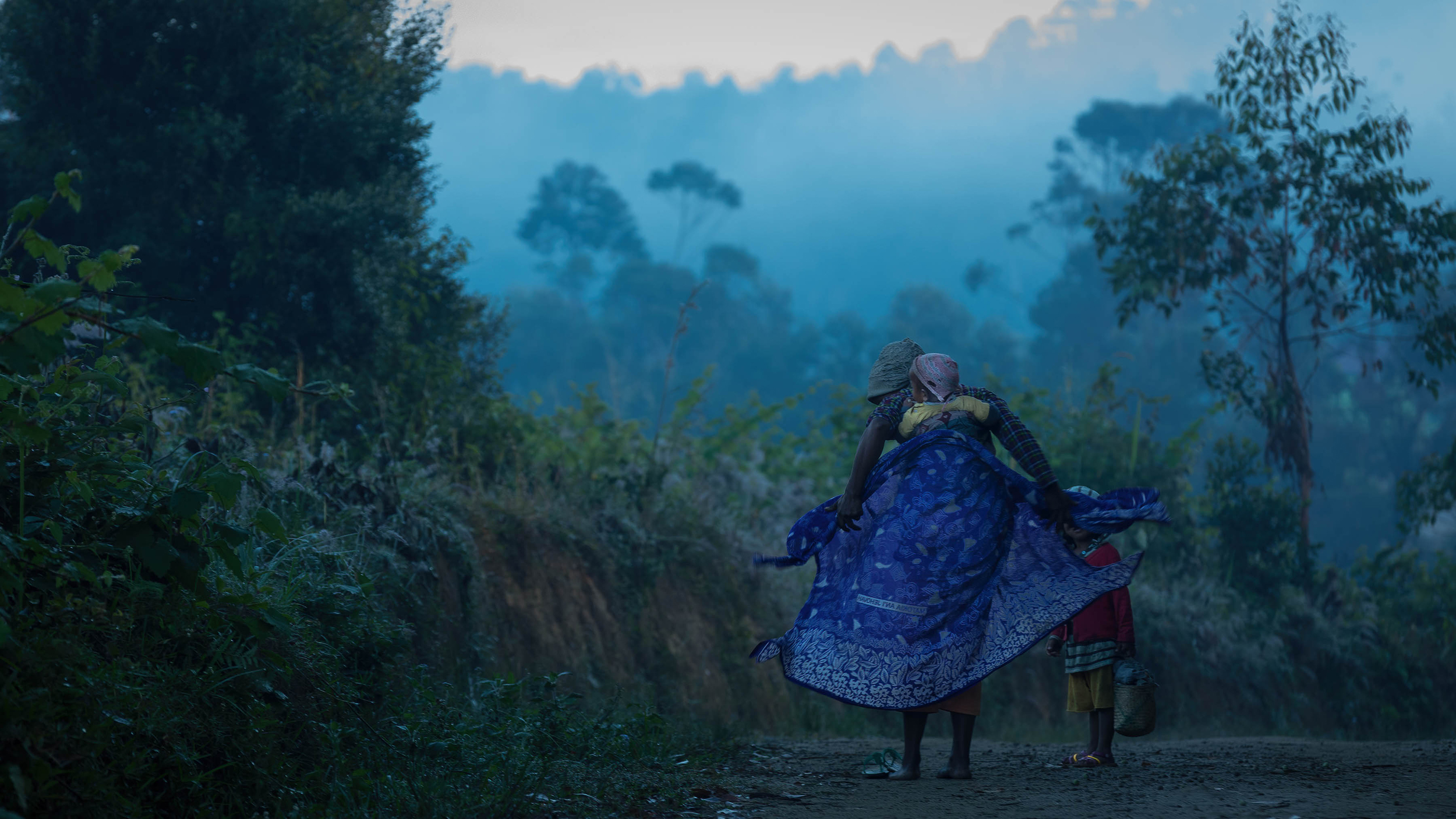
IMAGES ABOVE: Throughout my travels, I discovered that meaningful relationships can be formed by interacting with the local community on a daily basis. | © Patricia Seaton
At first, I found it difficult to integrate into the village life of Andasibe. As a non-native woman unable to speak Malagasy, I could hardly blend in. Carrying around a big camera added to this challenge. However, by walking around the village daily and interacting with the community, I was able to form meaningful relationships, even as an anomaly.
One of my favourite activities was visit my local bar and pick up a nightly beer. The proprietor was kind and funny. We exchanged pantomimes of our day’s adventures. A quick look around revealed that there were no other women in the bar. I was never invited to sit down. I took no offence and a beer to go. As a guest in any country, I do my best to abide by the local customs. It appeared that bars were for men only in Andasibe.
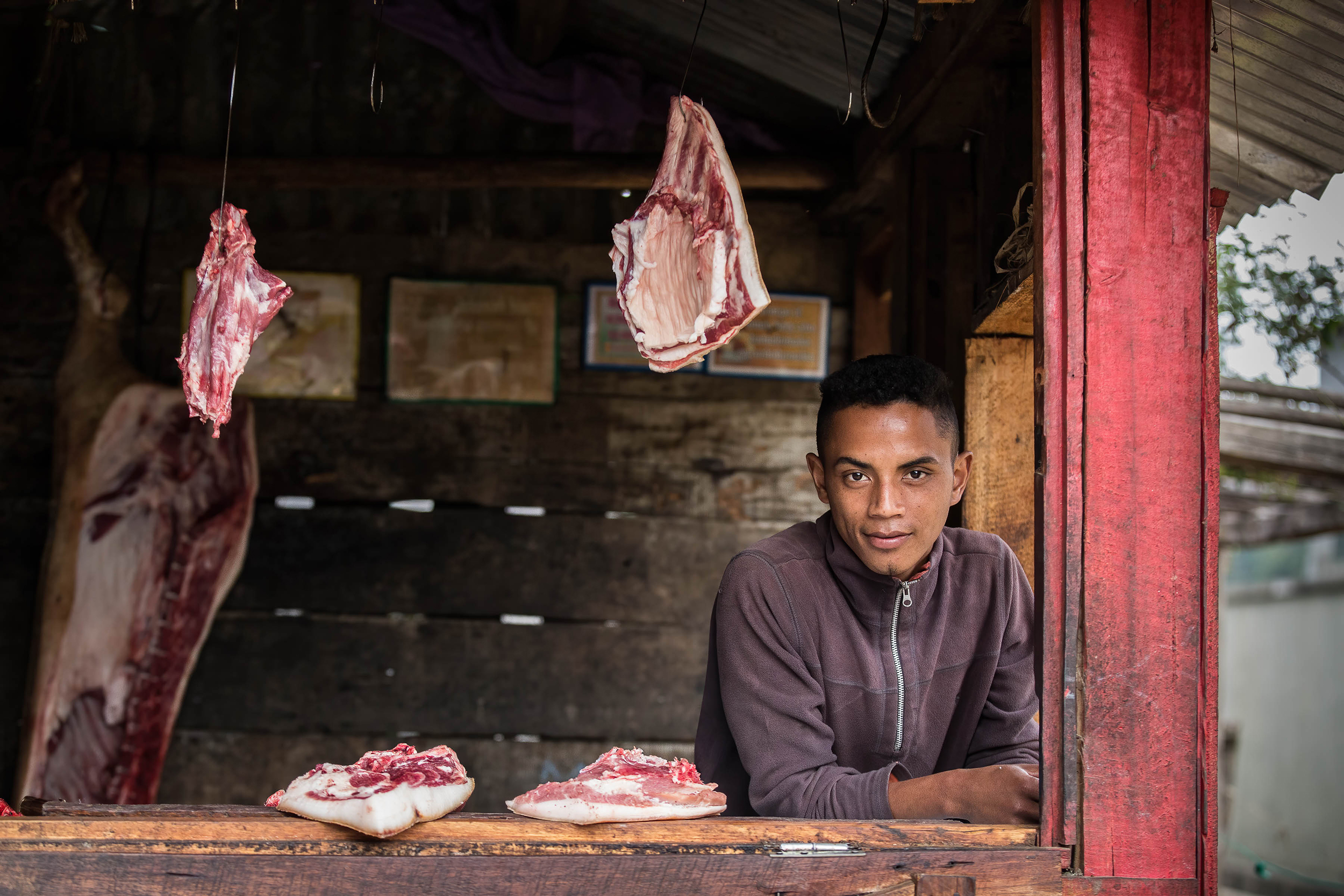
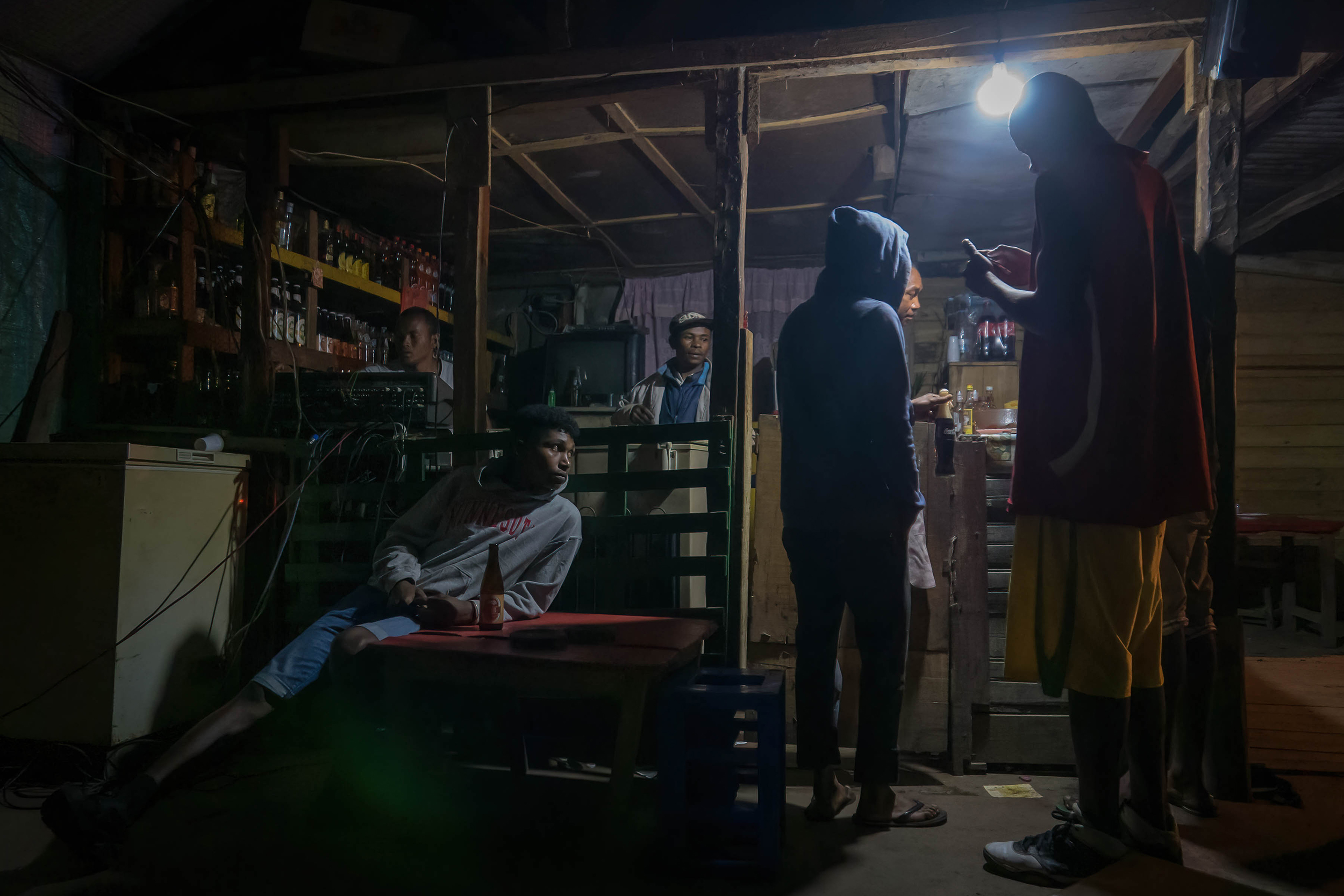
BILD LINKS: Integrating into the village was initially a difficult, as I did not speak Malagasy and was walking around town with a large camera in hand. | © Patricia Seaton
BILD RECHTS: Picking up a beer was one of my favorite activities at the end of the day. However, sit-down bars were only intended for men in Andasibe. | © Patricia Seaton
A Win-Win Situation
Despite many hurdles, MDI still continues to work towards better health for dogs to conserve wildlife in Madagascar. To date, MDI has spayed/neutered more than 1,500 dogs and cats. Additionally, it has vaccinated more than 5,000 animals – an incredible achievement. By focusing these efforts around Madagascar’s protected areas, the Mad Dog Initiative has reduced the population size of dogs and cats for the long-term. This has proven critical to the survival of the forest ecosystem: fewer non-native animals foraging in the forests and fewer diseased animals infecting the wildlife population.
Finally, as a step towards sustainable, long-term conservation success, MDI is moving towards a fully staffed and equipped Malagasy team and organization. The goal is to continue to expand these services and conservation efforts. Ultimately, MDI strives to have this work carried out by a Malagasy team of vets, researchers, scientists, and community healthcare workers.
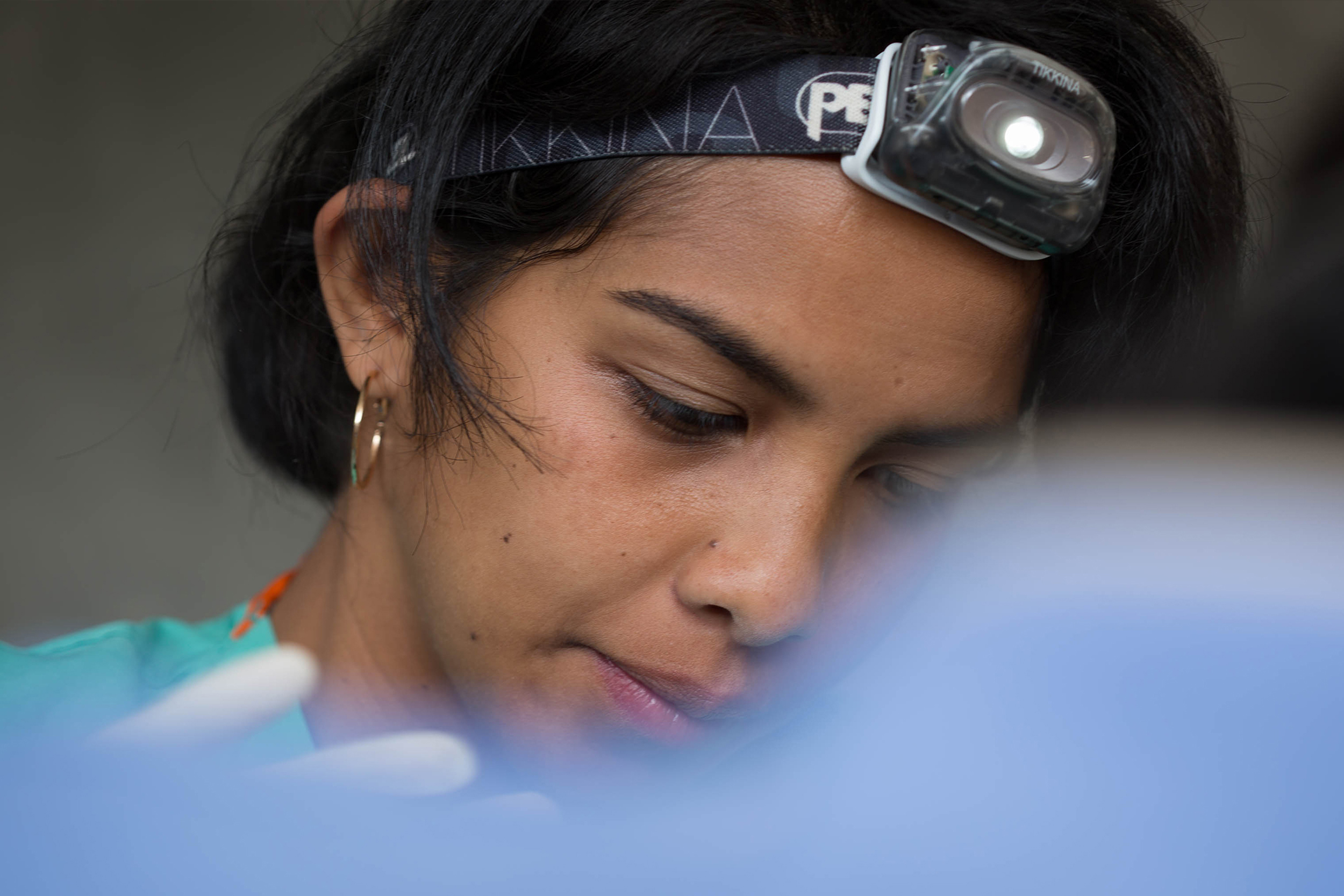
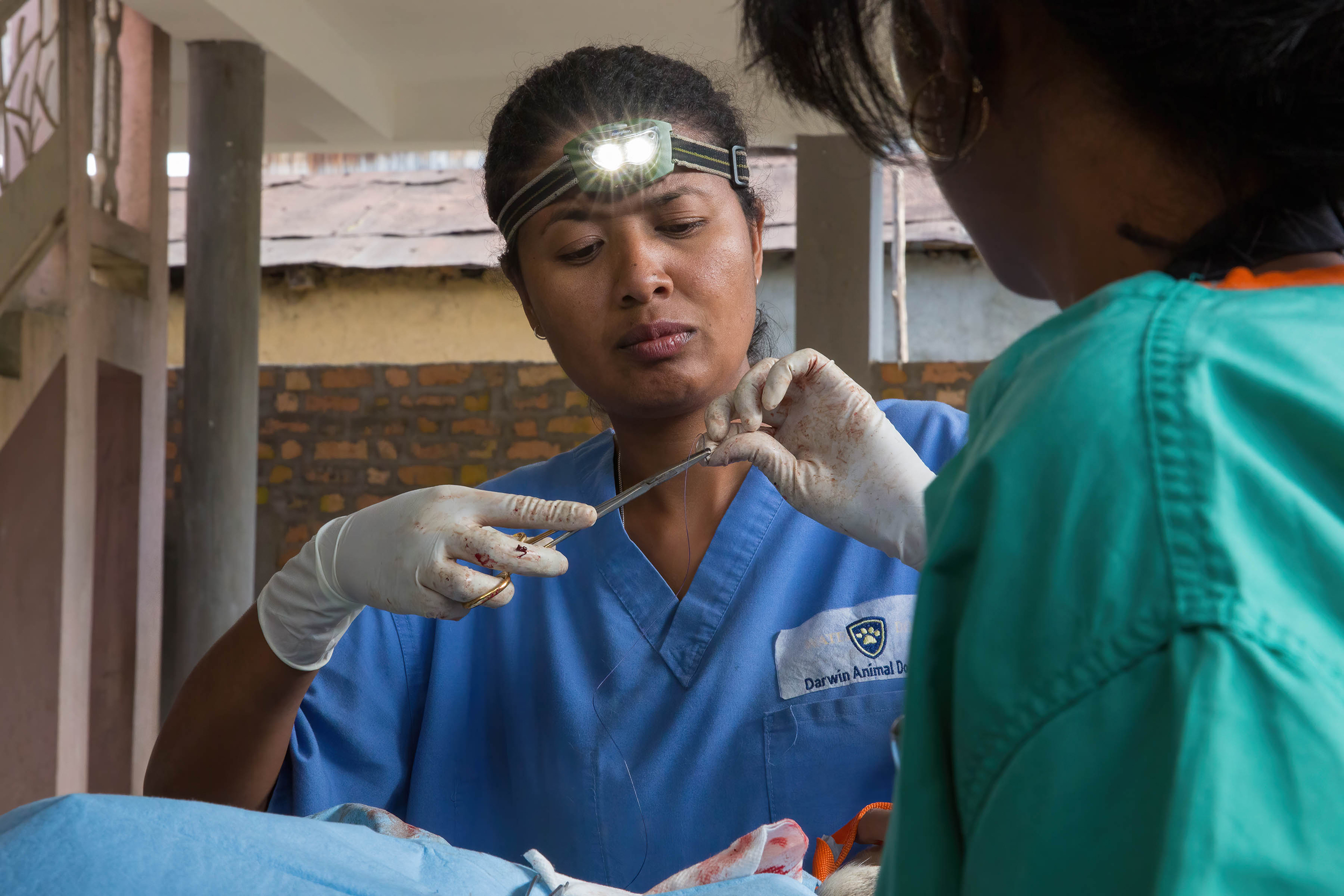
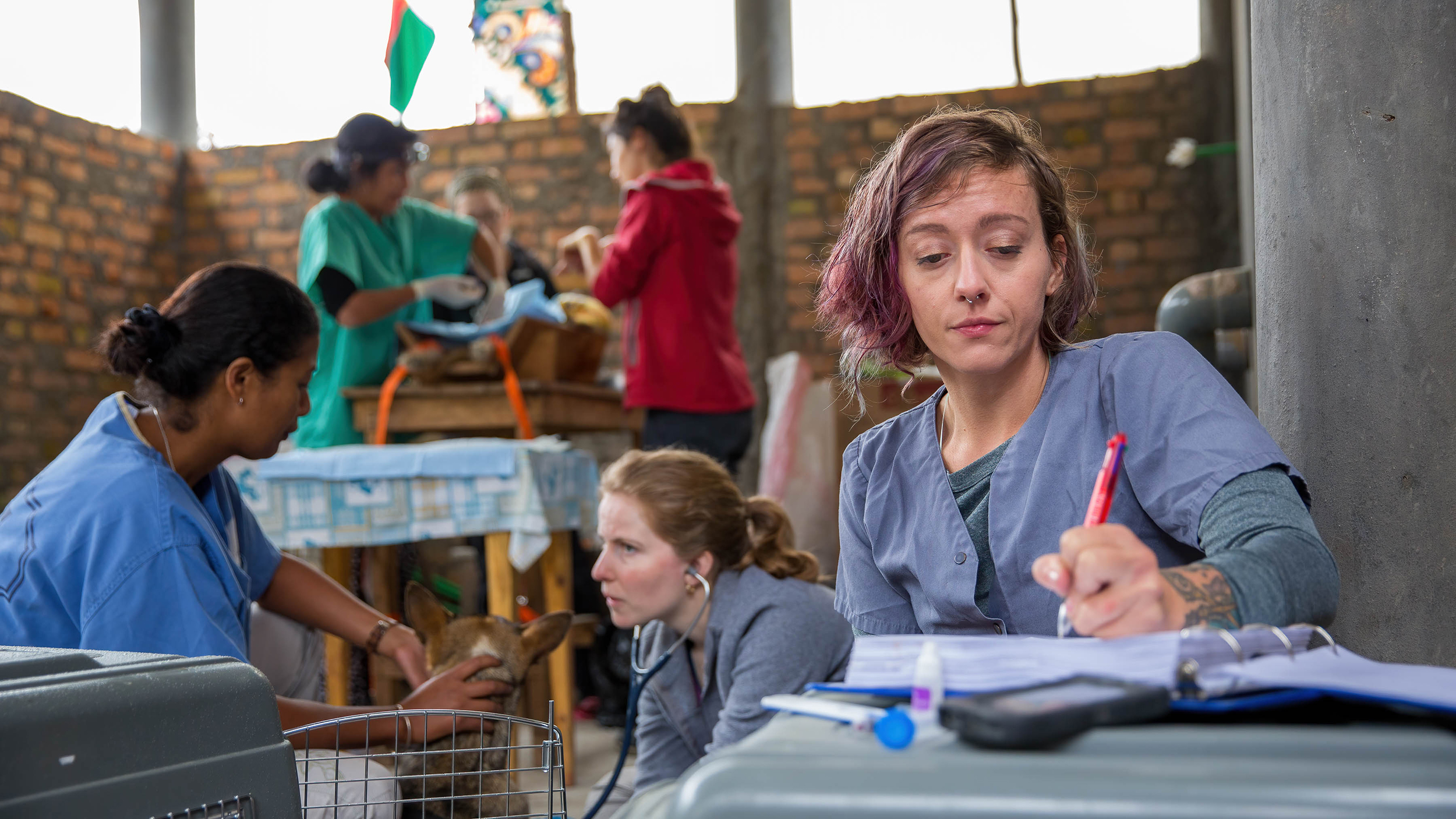
IMAGES IN ORDER OF APPEARANCE: Dr. Tsiky Rajaonarivelo (top-left). | Dr. Zoavina Randriana (top-right). | Dr Michon Arielle and team in surgery (bottom). | © Patricia Seaton
Don’t Ask Me What I Photograph. Ask Me Why.
Yes, in the end, I did hear the Indri lemur sing. I will never forget that first morning, when suddenly I heard directly above me and at the volume of a passing train, the magical, powerful, arresting and beautiful Indri call. I also came back from Madagascar with so much more. Throughout my journey, I witnessed a compassionate conservation effort working towards the survival of this unique and beautiful primate species.
Truth be told, it is tough working as a photographer in wildlife conservation. It endlessly exposes me to the cruelties man inflicts on our planet and its inhabitants. Yet, I also witness the relentless determination to correct the wrongs inflicted by the human species. While I am passionate about conservation and wildlife, I am also moved by the people who put themselves at the forefront of these causes. In this, I find hope.
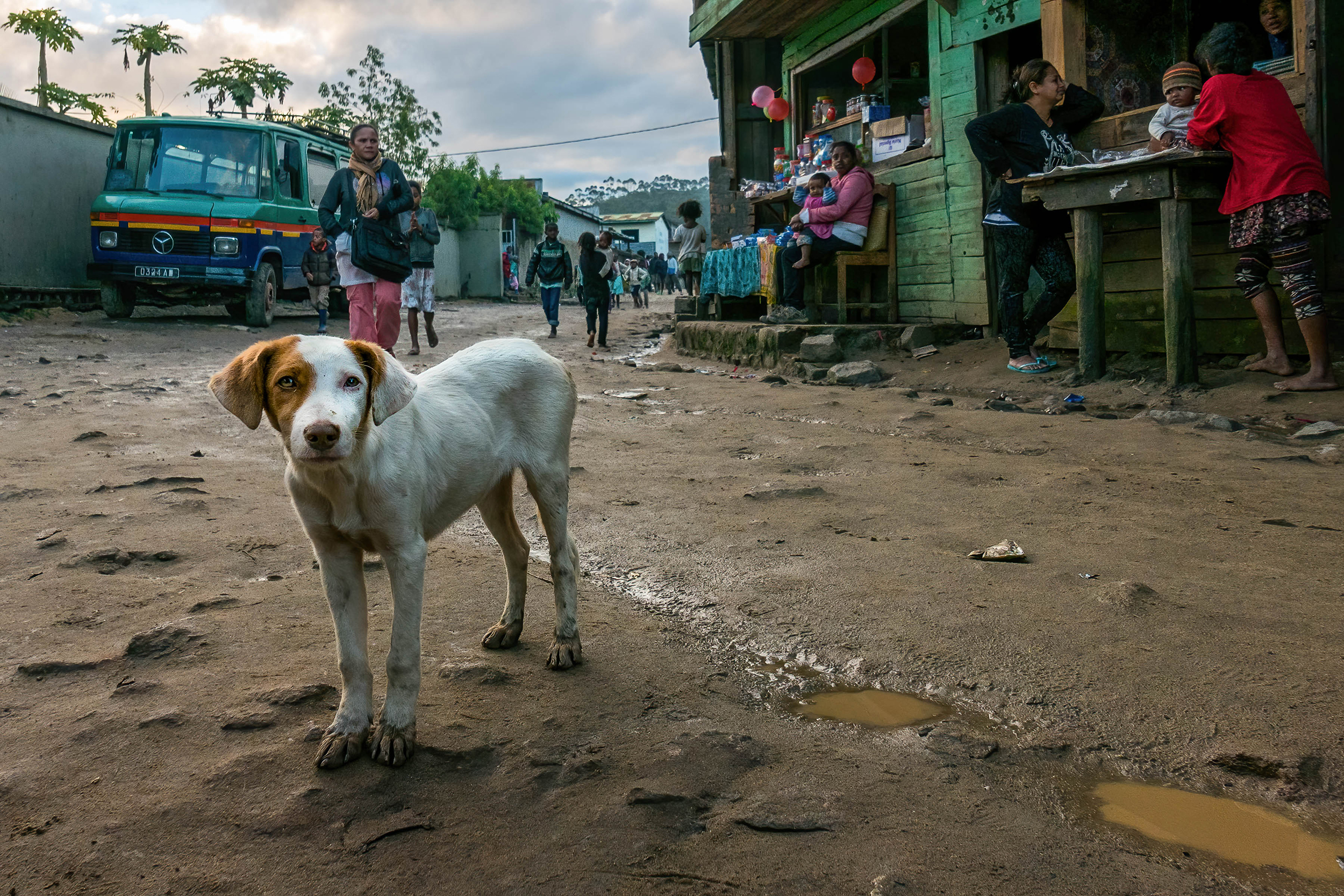
IMAGES ABOVE: As difficult as it is working as a conservation photographer, I am also moved by the people who put themselves at the forefront of these causes. | © Patricia Seaton
Every day, I hold the power of letting the world know how I see things, what I am about and what I stand for. As creators and photographers, we have a critical role to play in conservation efforts. We are witnesses, horn blowers, advocates, fundraisers, and storytellers. By creating meaningful images, we can move, educate and inspire others into action. It is my joy and purpose to show people how powerful they really are.
Because they matter.
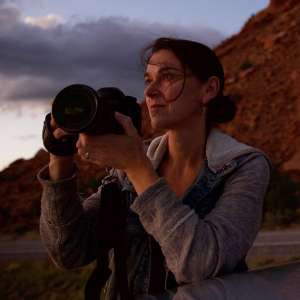
GESCHRIEBEN VON
Patricia Seaton
Patricia Seaton uses her photography to tell stories about wildlife conservation and animal welfare. She strives to create meaningful images to inspire others into action. She finds joy and purpose in showing others how extraordinary and powerful they really are.
Based in Canada | www.patriciaseatonphotography.com

EDITIERT VON
Lana Tannir
Lana Tannir ist die Gründerin und Redakteurin von Creatives for Conservation. Als professionelle Landschafts- und Wildlife-Fotografin und Filmemacherin hat sie sich auf Natur- und Tierschutzprojekte spezialisiert. Mit ihren Geschichten möchte sie den globalen Wandel fördern, indem sie das Bewusstsein schärft, die Bildung vorantreibt und die Menschen zum Handeln inspiriert.
Sitz in Deutschland | www.lana-tannir.com.com
Unseren Geschichten folgen
Melden Sie sich an, um weitere Geschichten über den Schutz von Natur und Wildtieren zu erhalten.
Weitere Stories entdecken
Entdecken Sie weitere inspirierende Geschichten, die von unseren kreativen Naturschützern geschrieben wurden.

Amazonas des Nordens
Der Great Bear Rainforest ist vielen Umweltbedrohungen ausgesetzt. Die Abholzung der gemäßigten Regenwälder, der Bau von Fischfarmen und Pipelines, kommerzieller Heringsfang im Frühjahr und die Trophäenjagd sind nur einige davon. Fotograf und Kameramann Niklas Weber dokumentiert die Herausforderungen dieses Ökosystems und erläutert mögliche Lösungen.
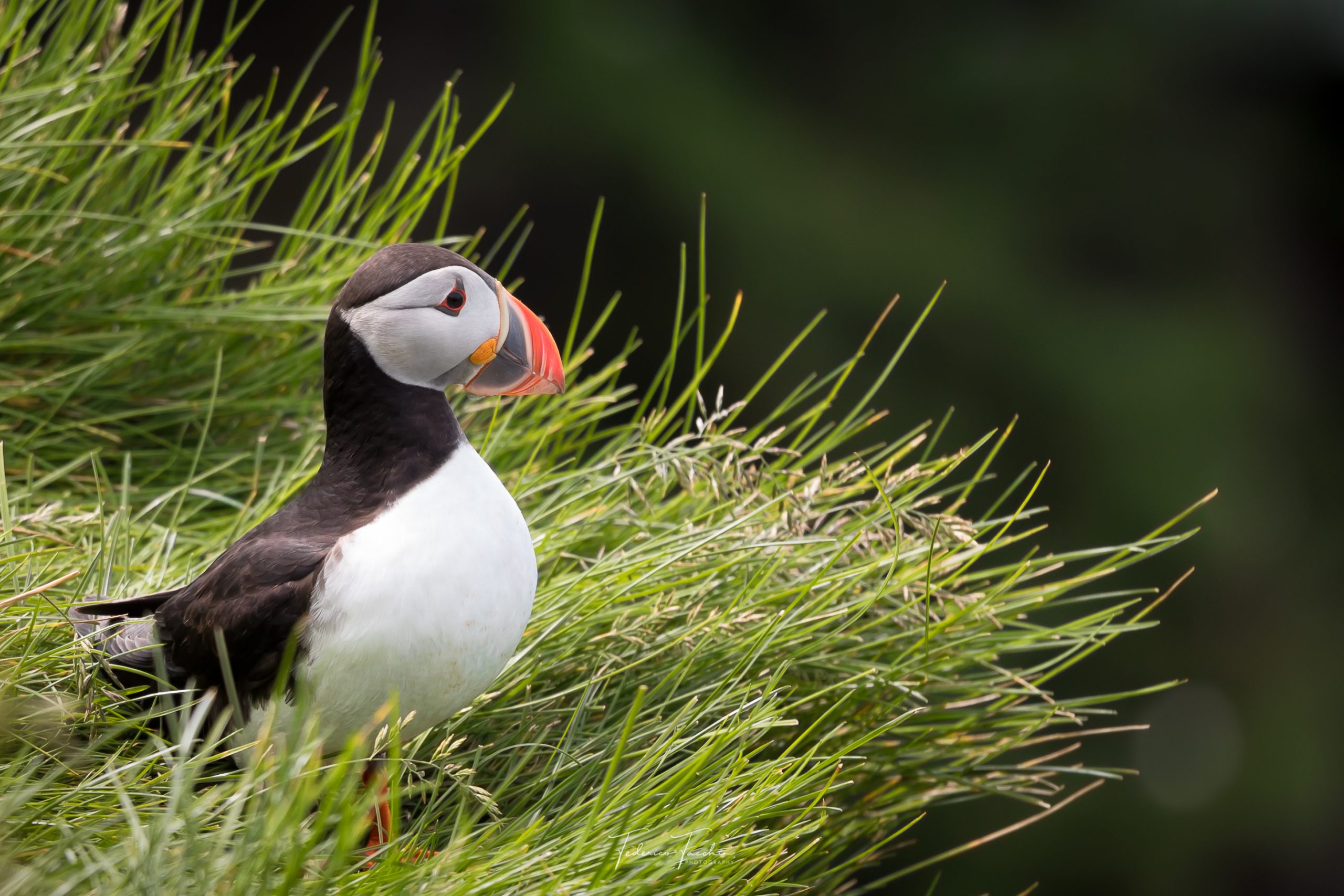
On the Brink: Atlantic Puffins in Iceland
While not considered an endangered species, Atlantic Puffins are nevertheless facing numerous challenges in Iceland. Overfishing, pollution, climate change and even hunting have led to a population decline by 45.6% between 2003 and 2017. Marine biologist, science teacher and photographer Federico Facchin shares his encounters with this species and discusses the need to protect them.
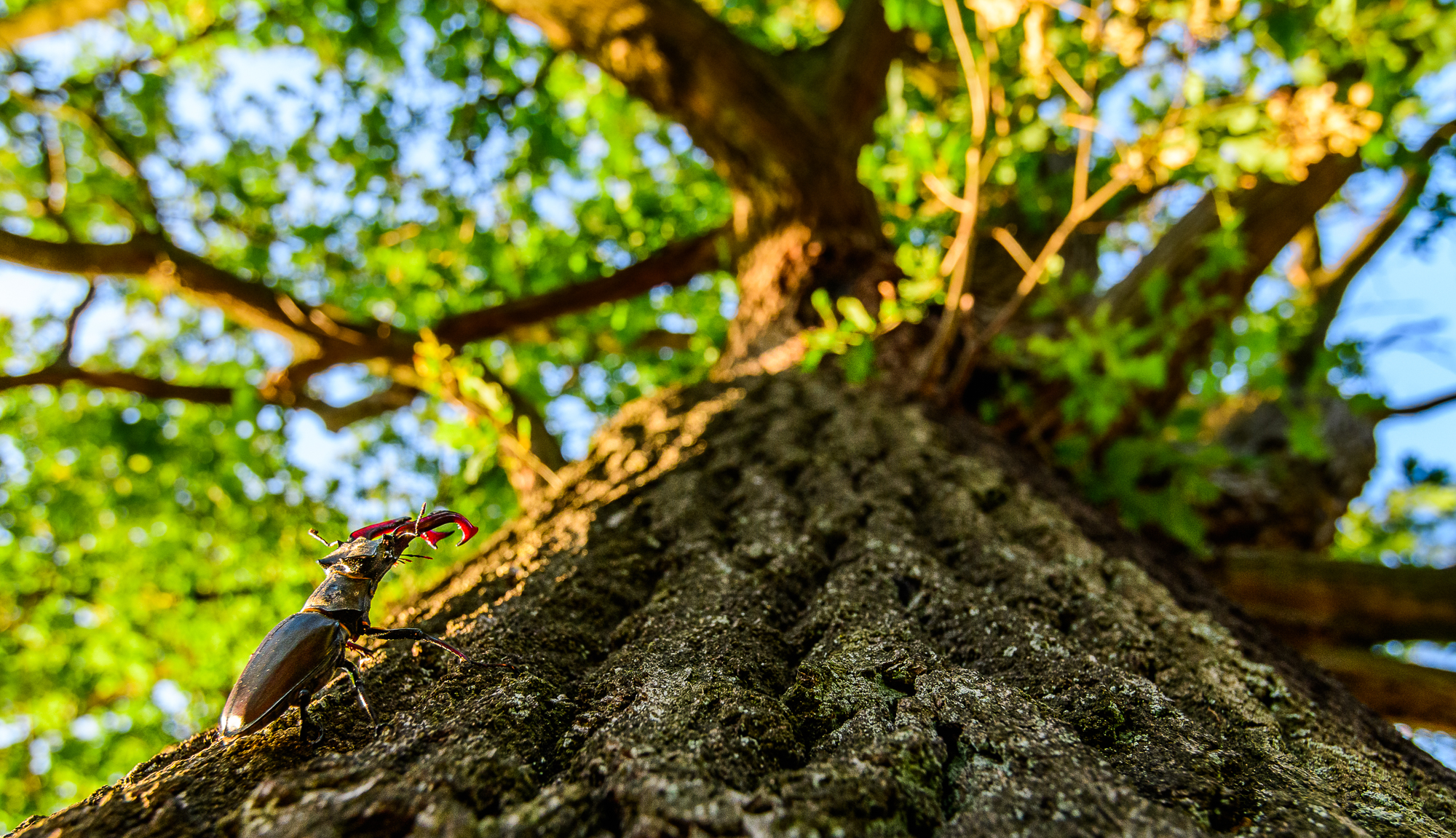
Conservation of European Forests
European forest ecosystems face various threats. Many of them originate from the management and exploitation systems in the past. However, numerous solutions are being applied in the current day to establish a balance between forestry and biodiversity. Ecologist and photographer Jeroen van Wijk reveals the challenges and solutions to conserve these forests.
